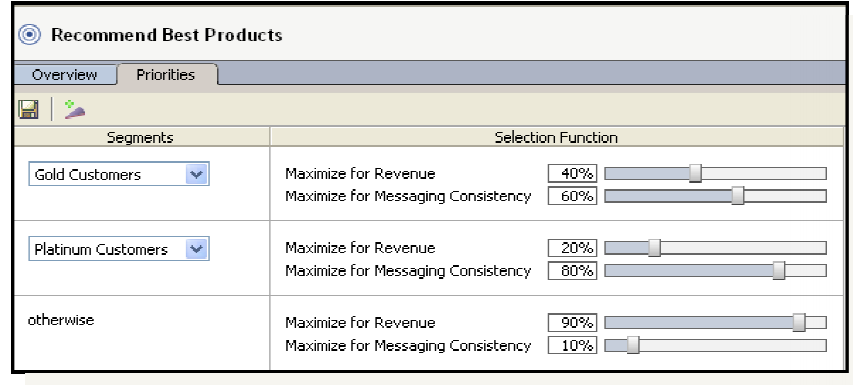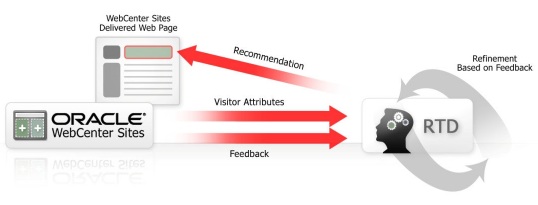Oracle WebCenter Sites + Real-time Decisions

Oracle WebCenter Sites has a lot to offer when it comes to delivering targeted content. You can create a market visitor segments with a wide variety of flexibility; define what should be shown and where on the page it should be shown. You can further define these segments based on implicit and explicit criteria. Implicit criteria would include geo-location, time, click stream and search engine referrals for keywords. While explicit criteria includes anything the visitor has decided to share with you (age, gender, hobbies, etc..).
Armed with this information, you can deliver very precise content to your visitors. Now people visiting you from New York can see different content than people visiting from London. People visiting in December can see different content then in July. This could be a different banner ad, different products you are trying to sell or just presenting them with relevant content based on who they are. If you have asked them to register with your site you can even further fine-tune your recommendations.
Once set up, all this works very well but there is a decent amount of manual effort required if you want to answer questions like “which of the 2 products recommended is getting more clicks? , “Have I segmented my users correctly?”, “how will adding a different product affect user clicks?”. To answer these questions would require someone manually going through analytics/ website log files and compiling the answers. This is where Real-Time Decisions can help.
Real-time Decisions (RTD) brings with it a couple of very important features that when connected with that WebCenter sites truly supercharges the targeting features of your site. The first one of course is taking the manual effort out of crunching through a vast amount of data. RTD uses real-time analytics, contextual data, predictive modeling, and event centric closed loop analytics to target content and makes continuous improvements, automatically adjusting and learning over time. As customer interactions take place, RTD continuously refines its data models to achieve optimal content selection for each site visitor.
RTD also includes built-in multi-variate testing so that content can be automatically optimized on the site based on ongoing testing by the system. It manages experiments, selecting which content to show, tracking recommendation variations shown to different visitors, analyzing results, and as it learns it automatically refining the content selection.
Another great feature is that it provides a simple UI for business users to edit and specify performance goals for a particular segment. Say your goal is to increase purchases or it could be to increase customer loyalty or it could be both. Furthermore you could also have different goals for existing customers versus new customers. RTD gives you a simple UI to be able to set these goals for your segments. Some of typical performance goals are:
- Maximizing revenue
- Maximize average transaction amount
- Maximize profit
- Maximize conversions
- Maximize page views
- Maximize retention
- Reduce shopping cart abandonment
- Maximize click-throughs
- Maximize downloads
- Increase customer loyalty
So how does this all work?
Once connected, the user goes to WebCenter Sites and creates a segment with some parameters, for example products you want to target in this particular segment and also specifies the area of the webpage where the target content should appear. At runtime WebCenter Sites passes visitor data to RTD (such as location, time, keywords). RTD examines this and returns a recommendation, WebCenter Sites then provides feedback to RTD regarding visitor’s action (was the recommendation clicked on) and with this feedback RTD refinance its recommendation data model.
As you can see, adding Real-time Decisions (RTD) to WebCenter Sites truly enhances your targeting capabilities.
- Log in to post comments



